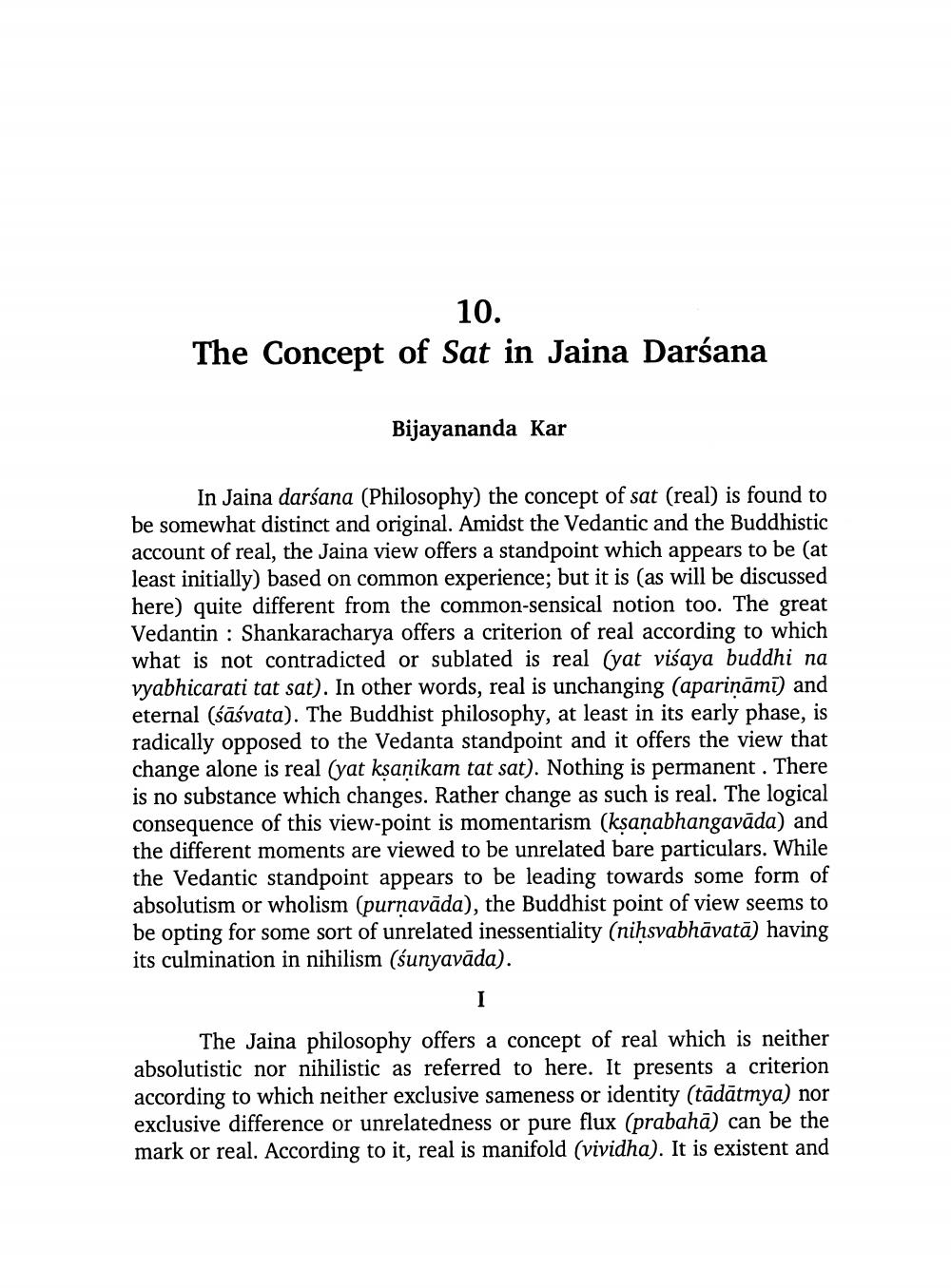________________ 10. The Concept of Sat in Jaina Darsana Bijayananda Kar In Jaina darsana (Philosophy) the concept of sat (real) is found to be somewhat distinct and original. Amidst the Vedantic and the Buddhistic account of real, the Jaina view offers a standpoint which appears to be (at least initially) based on common experience; but it is (as will be discussed here) quite different from the common-sensical notion too. The great Vedantin : Shankaracharya offers a criterion of real according to which what is not contradicted or sublated is real (yat visaya buddhi na vyabhicarati tat sat). In other words, real is unchanging (aparinami) and eternal (sasvata). The Buddhist philosophy, at least in its early phase, is radically opposed to the Vedanta standpoint and it offers the view that change alone is real (yat ksanikam tat sat). Nothing is permanent. There is no substance which changes. Rather change as such is real. The logical consequence of this view-point is momentarism (ksanabhangavada) and the different moments are viewed to be unrelated bare particulars. While the Vedantic standpoint appears to be leading towards some form of absolutism or wholism (purnavada), the Buddhist point of view seems to be opting for some sort of unrelated inessentiality (nihsvabhavata) having its culmination in nihilism (sunyavada). 1 The Jaina philosophy offers a concept of real which is neither absolutistic nor nihilistic as referred to here. It presents a criterion according to which neither exclusive sameness or identity (tadatmya) nor exclusive difference or unrelatedness or pure flux (prabaha) can be the mark or real. According to it, real is manifold (vividha). It is existent and




